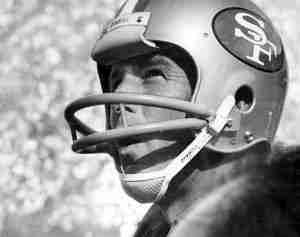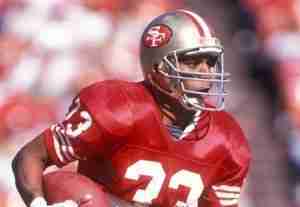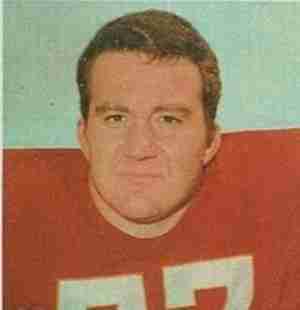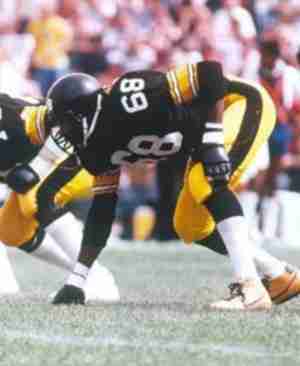Site Admin
48. John Brodie
When you think of great San Francisco quarterbacks, you automatically think of Joe Montana and Steve Young. Before them, there was a very good one named John Brodie who put up great numbers without the supporting cast that Montana and Young had.
John Brodie was one of the game's early gunslingers, and most of the time he had to be. The 49ers of the 1960s were not a great team, and Brodie was often the main reason his team was competitive. By the time the 1970s rolled around, Brodie had a better team around him, and though he was finally playoff-bound, the Niners could not get past the Cowboys for three years in a row. Still, Brodie won the 1970 MVP and was given more respect around the league.
Because he had to take a lot of chances, John Brodie’s interception rate was fairly high, and he finished his career with more picks than touchdown passes. This could be why he has never been a semi-finalist for the Hall, and with the San Francisco 49ers reaching great heights in the 1980s, virtually every Niners star before them has been forgotten. John Brodie deserves better than that.
Should John Brodie be in the Hall of Fame?
15. Roger Craig
It is difficult to understand why Roger Craig had to wait for ten years to be nominated for the Football Hall of Fame, given his strong credentials. Craig was an essential player in every offensive play during his prime. Although he began his career as a fullback, it soon became apparent that he was equally skilled at carrying the ball and blocking for others. In 1986, he made history by becoming the first football player to both rush and catch for 1,000 yards each. Opposing defences were intimidated by his high-knee running style and had to keep a close eye on him during every play.
Craig played a significant role in three Super Bowl Championship teams. Despite his innovative style, he is often overlooked due to the fact that he played alongside some of the most high-prolific offensive stars in football. Critics have suggested that he was merely a beneficiary of the great performances of his teammates, such as Montana and Rice. Nevertheless, Roger Craig was a valuable weapon for the 49ers' offence, and although there may be some debate around his place in the Hall of Fame, he undoubtedly deserved more consideration than he received, although the 2020 Blue Ribbon Finalist spot is a promising sign.
Should Roger Craig be in the Hall of Fame?
13. Jim Tyrer
Had Tyrer not broke down in his personal life, his on field accomplishments may have been enough to get him in to Canton. He was arguably the best Offensive Lineman in the AFL, and was a multiple time AFL All star. He was voted to the all time AFL team and was a big part of opening holes for Chiefs runners for years. Tyrer may very well the best lineman that Kansas City ever had.
5. L.C. Greenwood
The Pittsburgh Steelers of the 1970s won four Super Bowls and have ten members in the Football Hall of Fame, which would suggest that they are well-represented in Canton. However, many in Western Pennsylvania feel that there is a huge omission left in the black and yellow with L.C. Greenwood.
From the HBCU school of Arkansas-Pine Bluff, Greenwood proved to be a steal as the 238th Pick in 1969. A Steeler his entire career, Greenwood was a member of the famous Steel Curtain and played a crucial role in the Steelers' success, helping them win four Super Bowls in a five-year period. With six Pro Bowl selections, he was a formidable opponent for quarterbacks and had a significant impact on the game. Although sacks were not yet an official statistic, Greenwood recorded five of them in his four Super Bowl appearances. He was a tall, speedy defender who seemed to be everywhere on the field, and engulfed everything he touched
Despite being a Hall of Fame finalist six times, Greenwood has not yet been inducted. If another player from the 1970s Steelers team is inducted, it has to be L.C. Greenwood. As for Pittsburgh, they have acknowledged Greenwood in their Hall of Honor and All-Time Team.





